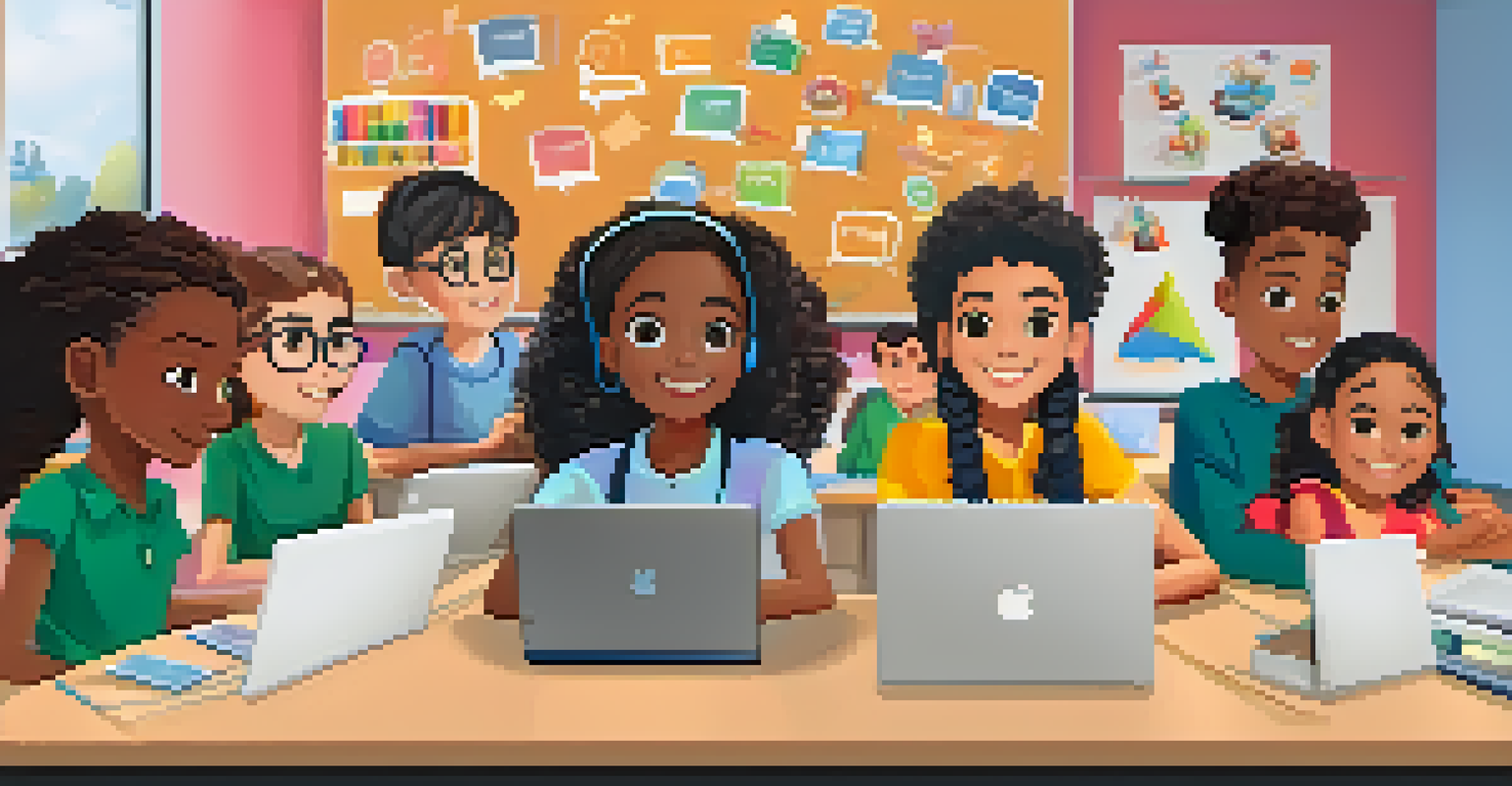Remote Learning: Overcoming Challenges in a Digital Age

Understanding the Shift to Remote Learning
The transition to remote learning has drastically changed the educational landscape. With schools and universities adopting online platforms, students and teachers alike have had to adapt to this new normal. This shift, while necessary, has brought about a host of challenges that require innovative solutions.
Education is the most powerful weapon which you can use to change the world.
Many students found themselves grappling with a lack of face-to-face interaction, which is crucial for effective learning. The absence of a structured classroom environment can lead to feelings of isolation and disengagement. Understanding these initial hurdles is the first step toward finding sustainable solutions.
Moreover, educators faced the daunting task of transforming traditional lesson plans into engaging digital formats. This required not only technical skills but also a deep understanding of how to maintain student engagement online. As we delve into the challenges, we’ll explore ways to navigate these complexities.
Technical Difficulties: A Common Hurdle
One of the most prevalent challenges in remote learning is the issue of technology. Not every student has access to reliable internet or suitable devices, creating a significant barrier to learning. This digital divide can exacerbate existing inequalities in education, making it critical to address these issues head-on.

Schools and institutions have been working to provide resources, such as loaner laptops and internet hotspots, to bridge this gap. However, the effectiveness of these solutions varies greatly depending on location and community support. The challenge lies not just in providing technology but ensuring that it is accessible and usable for all students.
Challenges of Remote Learning
The shift to remote learning has introduced significant challenges such as technology access, student engagement, and maintaining mental health.
Additionally, technical glitches during live classes can disrupt the flow of learning and lead to frustration. To overcome this, both educators and students need to become more adaptable and patient, fostering a culture of problem-solving and support. By addressing these technical difficulties directly, we can create a smoother learning experience.
Maintaining Student Engagement Remotely
Engaging students in a virtual environment can feel like trying to catch smoke with your bare hands. Without the physical presence of peers and teachers, many students struggle to stay focused. To combat this, educators are exploring interactive tools and activities that draw students in and make learning more dynamic.
The beautiful thing about learning is that no one can take it away from you.
Incorporating gamification, where elements of game design are used in learning, can significantly boost engagement. For example, using quizzes and competitions can make learning fun and motivate students to participate. By creating a sense of community and competition, students are more likely to stay engaged.
Furthermore, regular check-ins and feedback from teachers can help students feel more connected. Simple gestures, like virtual office hours or small group discussions, can foster a sense of belonging. Building this community is vital for keeping students motivated and invested in their education.
Time Management: A Skill for Success
Remote learning often blurs the lines between school and home life, making time management a critical skill for students. Without the structure of a traditional school day, students may struggle to keep up with assignments and deadlines. Developing a routine can help students balance their responsibilities and reduce stress.
Encouraging students to create a dedicated study space and set specific hours for learning can foster better habits. Using tools like calendars or task management apps can also aid in tracking assignments and managing time effectively. It’s about finding what works best for each individual and personalizing their approach to learning.
Parental Involvement is Key
Active parental support is crucial for student success, helping to create a structured and positive learning environment at home.
Additionally, teaching students about prioritization and goal setting can empower them to navigate their workload. Simple strategies, such as breaking tasks into smaller, manageable parts, can make a significant difference. With these skills, students can move from feeling overwhelmed to feeling in control of their learning journey.
The Role of Parents in Remote Learning
Parents have become key players in the remote learning landscape, taking on roles as facilitators and supporters. Their involvement can make a tremendous difference in how students navigate this new normal. Open communication between parents and teachers is essential to create a supportive learning environment at home.
Many parents are finding themselves balancing their own work responsibilities while ensuring their children stay engaged in their studies. This juggling act can be stressful, but it also presents an opportunity for families to work together to establish routines and support each other. Collaborating on learning goals can strengthen family bonds and enhance educational outcomes.
Moreover, parental support doesn't just stop at homework help; it extends to fostering a positive attitude towards learning. Encouraging curiosity and celebrating small wins can motivate students to push through challenges. When parents are actively involved, students often feel more supported and engaged in their learning journey.
Mental Health Matters: Supporting Students
The shift to remote learning can take a toll on students' mental health, making it essential to prioritize their well-being. Feelings of isolation, anxiety, and stress are common among students navigating this new reality. Recognizing these challenges is crucial for creating a supportive educational environment.
Schools are increasingly incorporating mental health resources, such as counseling services and wellness programs, to support students. Offering virtual workshops on stress management or mindfulness can provide students with valuable tools to cope. By addressing mental health openly, schools can normalize these conversations and encourage students to seek help when needed.
Future of Education: Hybrid Models
The future of education is leaning towards hybrid learning models that combine in-person and online experiences, accommodating diverse learning needs.
Creating an environment where students feel safe to express their emotions is vital. Teachers can play a significant role by checking in on students' well-being and fostering open discussions about mental health. When students feel supported, they are more likely to thrive academically and emotionally.
Looking Ahead: The Future of Remote Learning
As we navigate the challenges of remote learning, it’s important to reflect on the lessons learned and how they can shape the future of education. The experiences gained during this period can drive innovation and improvements in teaching methods. Embracing technology and flexible learning options can create more inclusive educational environments.
Hybrid models, which blend in-person and online learning, are likely to become more prevalent. This approach can cater to different learning styles and provide students with more choices in how they engage with their education. The future of learning is about adaptability and finding what best suits the needs of each student.

Ultimately, the goal is to create a resilient educational system that can withstand future disruptions. By leveraging technology and focusing on holistic support for students, we can pave the way for a brighter future in education. Together, we can overcome the challenges and harness the potential of remote learning.